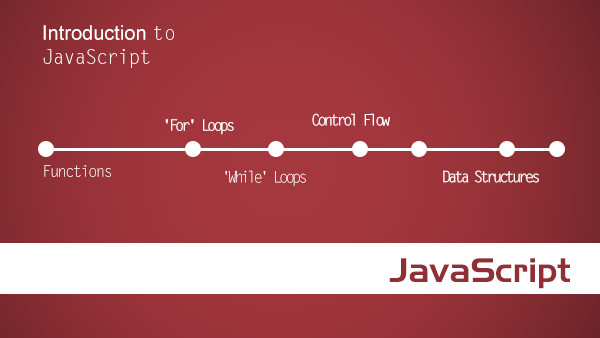本文详细介绍了ahooks案例,包括如何使用ahooks中的useRequest、useLocalStorage等Hooks来简化React应用开发。通过具体示例展示了如何在实际项目中应用这些Hooks,帮助开发者提高代码的可维护性和开发效率。
ahooks 是一个基于 React 的 Hooks 集合库,它包含了一组常用的 Hooks 以便开发者能够更高效地编写 React 应用。通过引入 ahooks,你可以在 React 应用中快速实现异步操作、数据持久化、组件生命周期等高级功能,而不需要从头开始编写这些逻辑。
ahooks 提供了许多不同的 Hooks,例如 useRequest 用于处理网络请求,useLocalStorage 用于保存用户数据到本地存储,useUpdateEffect 用于在组件更新后执行清理操作。这些 Hooks 可以帮助开发者减少重复代码,提高代码的可维护性,从而将更多的精力投入到应用的业务逻辑上。
安装和配置 ahooks 是一个相对简单的过程。首先,你需要确保你的项目中已经安装了 Node.js 和 npm 或 yarn。以下是安装和配置 ahooks 的步骤。
安装ahooks
使用 npm 安装 ahooks:
npm install ahooks或者使用 yarn 安装 ahooks:
yarn add ahooks配置React项目
在你的 React 应用中,你不需要进行额外的配置来使用 ahooks 提供的 Hooks。只需按照正常方式引入这些 Hooks 即可。例如,假设你想要使用 useRequest Hook,你可以这样引入和使用它:
import React from 'react';
import { useRequest } from 'ahooks';
function ExampleComponent() {
const { data, loading, error } = useRequest(
() => fetch('https://api.example.com/data'),
{
manual: false, // 设置为 false 表示自动调用,设置为 true 表示手动调用
onSuccess(data) {
console.log('Data fetched successfully:', data);
},
onError(error) {
console.error('Error fetching data:', error);
},
}
);
if (loading) return <div>Loading...</div>;
if (error) return <div>Error fetching data</div>;
return (
<div>
<h1>Data from API</h1>
<pre>{JSON.stringify(data, null, 2)}</pre>
</div>
);
}
export default ExampleComponent;这里,我们导入了 useRequest Hook,并使用它来发起一个网络请求。useRequest 接收一个函数作为参数,该函数返回一个 Promise。这个 Promise 可以是任何返回数据的异步操作,例如使用 fetch API 发起网络请求。
依赖React版本
ahooks 支持 React 16.8.0 及以上版本。确保你项目的 React 版本符合要求。
常用ahooks组件介绍ahooks 提供了多个实用的 Hooks,涵盖了从网络请求到状态管理的各个方面。以下是几个常用的 Hooks 的简要介绍:
useRequest
useRequest 是一个用于发起网络请求的 Hooks。它封装了一部分常见的网络请求逻辑,例如请求的发起、数据的获取、错误处理等。以下是一些常用参数:
manual:是否手动控制请求发起,默认为false。设置为true时,请求不会自动发起,而是需要通过调用run方法来手动触发。onSuccess:请求成功后的回调函数。onError:请求失败后的回调函数。onFinally:请求完成后的回调函数(无论成功或失败)。
import React from 'react';
import { useRequest } from 'ahooks';
function FetchData() {
const { data, loading, error, run } = useRequest(
async () => {
const response = await fetch('https://api.example.com/data');
return response.json();
},
{
manual: true,
}
);
const handleFetch = async () => {
run();
};
if (loading) return <div>Loading...</div>;
if (error) return <div>Error fetching data</div>;
return (
<div>
<button onClick={handleFetch}>Fetch Data</button>
{data ? <pre>{JSON.stringify(data, null, 2)}</pre> : null}
</div>
);
}
export default FetchData;useLoading
useLoading 是一个用于显示加载状态的 Hooks。它帮助你在 React 应用中管理加载状态,通常用于显示加载指示器(如 loading spinner)。以下是一些常用参数:
loading:设置加载状态。onMount:组件挂载时触发的加载状态。
import React from 'react';
import { useLoading } from 'ahooks';
function WithLoadingIndicator() {
const { loading, setLoading, setMountLoading } = useLoading();
React.useEffect(() => {
setLoading(true);
setTimeout(() => {
setLoading(false);
}, 2000);
}, []);
return (
<div>
<div>Page is loading...</div>
{loading ? <div>Loading...</div> : null}
</div>
);
}
export default WithLoadingIndicator;useLocalStorage
useLocalStorage 是一个用于存储数据到本地存储的 Hooks。它封装了 localStorage 的使用,使得开发者可以更方便地保存和读取数据。以下是一些常用参数:
key:存储数据的键。defaultValue:默认值。storage:指定存储类型,如localStorage或sessionStorage。
import React from 'react';
import { useLocalStorage } from 'ahooks';
function App() {
const [value, setValue, { set, remove }] = useLocalStorage('myKey', '', {
storage: 'localStorage',
});
const handleChange = (e) => {
setValue(e.target.value);
};
return (
<div>
<input type="text" value={value} onChange={handleChange} />
<button onClick={() => set('newValue')}>Set New Value</button>
<button onClick={() => remove()}>Remove Value</button>
</div>
);
}
export default App;useUpdateEffect
useUpdateEffect 是一个在组件更新后执行清理操作的 Hooks。它类似于标准的 useEffect Hooks,但会在每次组件更新后触发,而不是每次渲染时触发。以下是一些常用参数:
effect:一个函数,用于执行清理操作。dependencies:依赖数组,当依赖数组中的值发生变化时,清理操作将执行。
import React, { useState } from 'react';
import { useUpdateEffect } from 'ahooks';
function MyComponent() {
const [count, setCount] = useState(0);
useUpdateEffect(() => {
console.log('Component updated:', count);
}, [count]);
return (
<div>
<p>Count: {count}</p>
<button onClick={() => setCount((prevCount) => prevCount + 1)}>
Increment
</button>
</div>
);
}
export default MyComponent;useQuery
useQuery 是一个用于查询数据的 Hooks。它被设计用于那些需要在组件挂载后自动执行查询操作的情况。以下是一些常用参数:
query:查询函数,返回一个 Promise。options:配置对象,包含onSuccess、onError、onFinally等回调函数。
import React from 'react';
import { useQuery } from 'ahooks';
function QueryData() {
const { data, loading, error } = useQuery(
() => fetch('https://api.example.com/data').then((res) => res.json()),
{
onSuccess(data) {
console.log('Data fetched successfully:', data);
},
onError(error) {
console.error('Error fetching data:', error);
},
}
);
if (loading) return <div>Loading...</div>;
if (error) return <div>Error fetching data</div>;
return (
<div>
<h1>Data from API</h1>
<pre>{JSON.stringify(data, null, 2)}</pre>
</div>
);
}
export default QueryData;这些常用的 Hooks 可以大幅度简化 React 应用的开发,使开发者可以更专注于实现核心业务逻辑。
使用ahooks时的注意事项在使用 ahooks 提供的 Hooks 时,有一些注意事项需要开发者特别注意,以确保应用的稳定性和性能。
依赖注入
在某些情况下,useRequest 或 useQuery 等 Hooks 需要依赖外部提供的参数。这些参数可能会影响 Hooks 的行为,例如 API 请求的 URL 或请求体。确保这些参数是正确的,并且在依赖数组中正确地声明它们。
import React, { useState } from 'react';
import { useRequest } from 'ahooks';
function MyComponent() {
const [postId, setPostId] = useState(1);
const { data, loading } = useRequest(
() => fetch(`https://api.example.com/post/${postId}`),
{
onSuccess(data) {
console.log('Post fetched successfully:', data);
},
}
);
return (
<div>
<button onClick={() => setPostId(postId + 1)}>Change Post ID</button>
{loading ? <div>Loading...</div> : <pre>{JSON.stringify(data, null, 2)}</pre>}
</div>
);
}
export default MyComponent;在这个例子中,postId 是 useRequest 的依赖。每当 postId 发生变化时,useRequest 会重新发起请求。确保依赖数组中包含所有的依赖项,以便在依赖项变化时重新触发 Hooks。
错误处理
正确处理异步操作中的错误是非常重要的。ahooks 提供了一些回调函数,如 onError,可以在请求失败时进行错误处理。确保在这些回调函数中提供适当的错误信息,并采取必要的措施来恢复应用的正常运行。
import React from 'react';
import { useRequest } from 'ahooks';
function MyComponent() {
const { data, loading, error } = useRequest(
() => fetch('https://api.example.com/data'),
{
manual: false,
onSuccess(data) {
console.log('Data fetched successfully:', data);
},
onError(error) {
console.error('Error fetching data:', error);
// 可以在这里显示错误信息或重新发起请求
},
}
);
if (loading) return <div>Loading...</div>;
if (error) return <div>Error fetching data</div>;
return <div>Data: {JSON.stringify(data, null, 2)}</div>;
}
export default MyComponent;在这个例子中,请求失败时会调用 onError 回调函数,并且我们可以在其中处理错误。
性能优化
在使用 useRequest 或其他异步 Hooks 时,需要注意性能问题,特别是在频繁调用这些 Hooks 时。尽量减少不必要的请求,使用缓存来避免重复请求相同数据,并且考虑使用 manual 参数来手动控制请求的发起。
import React, { useState } from 'react';
import { useRequest } from 'ahooks';
function MyComponent() {
const [fetchRequested, setFetchRequested] = useState(false);
const { data, loading, error, run } = useRequest(
() => fetch('https://api.example.com/data'),
{
manual: true,
onSuccess(data) {
console.log('Data fetched successfully:', data);
},
onError(error) {
console.error('Error fetching data:', error);
},
}
);
const handleFetch = () => {
setFetchRequested(true);
run();
};
if (loading) return <div>Loading...</div>;
if (error) return <div>Error fetching data</div>;
return (
<div>
<button onClick={handleFetch} disabled={fetchRequested}>
Fetch Data
</button>
{data ? <pre>{JSON.stringify(data, null, 2)}</pre> : null}
</div>
);
}
export default MyComponent;在这个例子中,我们使用了一个状态变量 fetchRequested 来控制请求是否已经发出。这可以防止多次请求相同的数据。
状态管理
在某些情况下,你可能需要管理一些复杂的状态。使用 useReducer 或 useContext 等 Hooks 来管理状态可以提高代码的可维护性和可读性。确保在处理复杂状态时选择合适的方法,并避免在组件中直接修改状态,而是通过 Hooks 来管理状态的变化。
import React, { useReducer } from 'react';
import { useRequest } from 'ahooks';
function MyComponent() {
const [state, dispatch] = useReducer(reducer, initialState);
const { data, loading, error } = useRequest(
() => fetch('https://api.example.com/data'),
{
manual: false,
onSuccess(data) {
dispatch({ type: 'FETCH_SUCCESS', payload: data });
},
onError(error) {
dispatch({ type: 'FETCH_ERROR', payload: error });
},
}
);
if (loading) return <div>Loading...</div>;
if (error) return <div>Error fetching data</div>;
return <div>Data: {JSON.stringify(data, null, 2)}</div>;
}
const initialState = { data: null, error: null };
function reducer(state, action) {
switch (action.type) {
case 'FETCH_SUCCESS':
return { ...state, data: action.payload, error: null };
case 'FETCH_ERROR':
return { ...state, data: null, error: action.payload };
default:
return state;
}
}
export default MyComponent;在这个例子中,我们使用了 useReducer 来管理数据的状态,而不是直接在 useRequest 的回调函数中修改状态。
在深入理解这些 Hooks 的用法后,我们可以通过一个具体的案例来展示如何在实际应用中使用 ahooks。假设我们要开发一个简单的博客应用,这个应用需要完成以下功能:
- 获取最新的博客文章列表。
- 在文章列表页面点击文章标题,跳转到文章详情页面。
- 在文章详情页面展示完整的文章内容。
我们可以使用 useRequest 和 useRouter 来实现这些功能。以下是一个简单的实现示例:
获取最新的博客文章列表
首先,我们使用 useRequest 来获取最新的博客文章列表。我们假设有一个 API 可以提供文章列表数据。
import React from 'react';
import { useRequest } from 'ahooks';
import { Link } from 'react-router-dom';
function BlogList() {
const { data, loading, error } = useRequest(
() => fetch('https://api.example.com/posts'),
{
onSuccess(data) {
console.log('Blog posts fetched successfully:', data);
},
onError(error) {
console.error('Error fetching blog posts:', error);
},
}
);
if (loading) return <div>Loading...</div>;
if (error) return <div>Error fetching blog posts</div>;
return (
<div>
<h1>Blog Posts</h1>
<ul>
{data &&
data.map((post) => (
<li key={post.id}>
<Link to={`/posts/${post.id}`}>{post.title}</Link>
</li>
))}
</ul>
</div>
);
}
export default BlogList;跳转到文章详情页面
在上面的代码中,我们使用 Link 组件来实现点击文章标题后跳转到文章详情页面。每篇文章的标题是一个 Link,点击后会跳转到 /posts/:postId 路由。
import React from 'react';
import { useRouteMatch, useHistory } from 'react-router-dom';
function BlogPost() {
const { params } = useRouteMatch();
const history = useHistory();
const handleClick = () => {
history.push(`/posts/${params.postId}`);
};
return (
<div>
<h1>Blog Post Details</h1>
<p>Post ID: {params.postId}</p>
<button onClick={handleClick}>Go to Details</button>
</div>
);
}
export default BlogPost;展示文章详情
在文章详情页面,我们再次使用 useRequest 来获取文章的详细内容。我们假设 API 的 URL 会根据文章的 ID 动态生成。
import React from 'react';
import { useRequest } from 'ahooks';
import { useRouteMatch } from 'react-router-dom';
function BlogPostDetails() {
const { params } = useRouteMatch();
const { data, loading, error } = useRequest(
() => fetch(`https://api.example.com/posts/${params.postId}`),
{
onSuccess(data) {
console.log('Blog post fetched successfully:', data);
},
onError(error) {
console.error('Error fetching blog post:', error);
},
}
);
if (loading) return <div>Loading...</div>;
if (error) return <div>Error fetching blog post</div>;
return (
<div>
<h1>Blog Post Details</h1>
<h2>{data.title}</h2>
<p>{data.body}</p>
</div>
);
}
export default BlogPostDetails;以上代码展示了如何使用 ahooks 的 useRequest 和其他 React Hooks 来构建一个简单的博客应用。通过这种方式,我们可以更高效地实现应用的各个功能模块。
通过本文,我们详细介绍了 ahooks 这个 React Hooks 集合库。ahooks 提供了多种实用的 Hooks,帮助开发者高效地实现各种功能,如网络请求、数据存储、组件生命周期等。通过对这些 Hooks 的详细介绍和案例解析,我们展示了如何在实际项目中使用这些 Hooks。
参考链接:
- ahooks 官方文档:https://ahooks.js.org
- React 官方文档:https://reactjs.org
- React Router 官方文档:https://reactrouter.com
如果你正在开发一个 React 应用,并希望简化你的开发流程,不妨考虑使用 ahooks。它可以帮助你减少重复代码,并提高代码的可维护性。同时,通过参考 ahooks 官方文档和 React 官方文档,你可以更深入地了解这些 Hooks 的使用方法和最佳实践。
为了进一步学习 React 和 ahooks,推荐访问 慕课网,这里有丰富的课程资源,涵盖从基础到高级的各种 React 和 Hooks 相关内容。通过这些资源,你可以系统地提升自己的编程技能,并在实际项目中更好地应用这些知识。

 随时随地看视频
随时随地看视频




